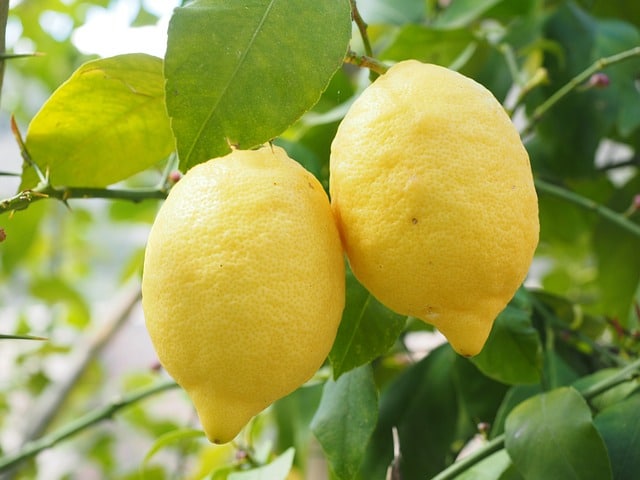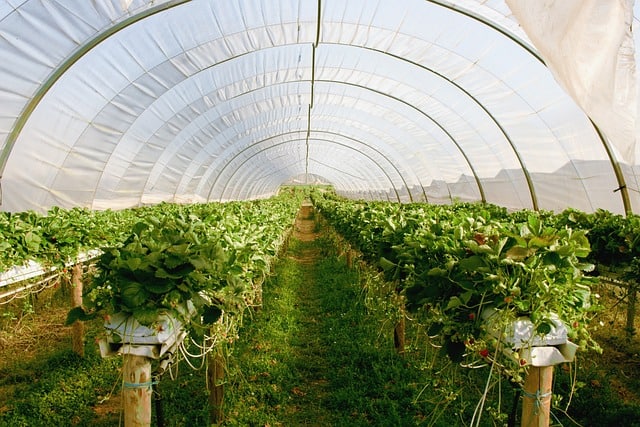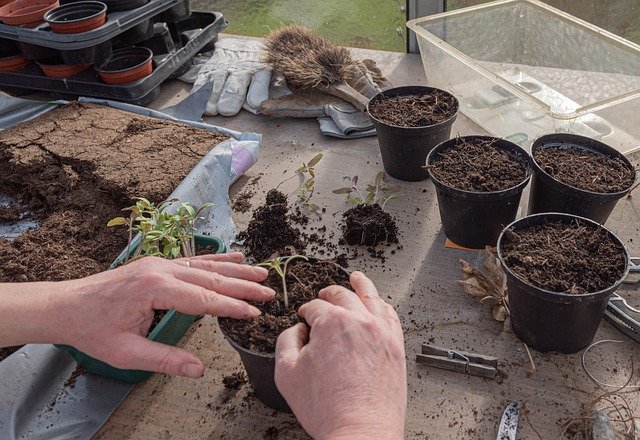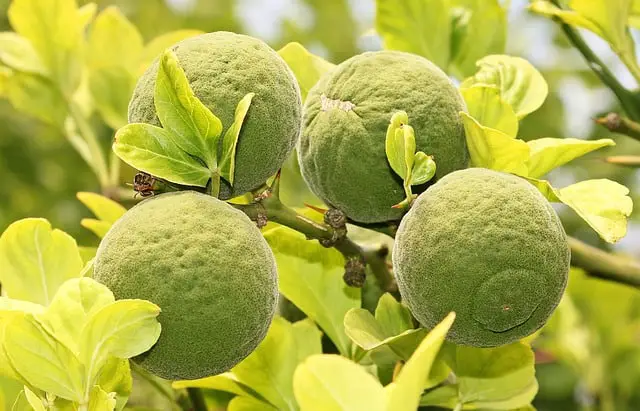When life gives you lemons, grow a lemon tree. Lemon trees are evergreen trees that can beat the harsh weather and overwinter easily. Still, lemon trees can only bear temperatures up to a certain point. If want to know more about lemon tree temperature tolerance, read on.
What Is a Lemon Tree Temperature Tolerance?

Lemon trees thrive in temperatures between 77°F to 86°F but temperatures above 86°F don’t affect the tree’s growth too much. Ideally, lemon trees want temperature conditions similar to the USDA zones 9-11. These zones have warm summers and mild winters.
Since these zones have plenty of sunlight all year round and there’s not much frost during winter, they are great for winter gardening.
The minimum winter temperatures in these zones are 20°-30°F in zone 9, 30°-40° in zone 10, and more than 40°F in zone 11. The lemon tree can easily survive the winter at this temperature range.
However, temperatures below that are harmful to your tree. Below 29°F, the lemon tree stops producing new fruits and young lemons begin to spoil. At around 23°F, the lemon tree’s leaves begin to wilt. The lemon tree’s mature fruits begin to fall if the temperature dips below -3°F degrees.
If you live in a dominantly cold area, we recommend growing your lemon tree indoors in a pot or a well-regulated greenhouse. You can move the pot indoors on really cold days and back outdoors when the climate improves.
How to Protect Lemon Trees from Frost?
Lemon trees can easily survive if the temperature is only slightly above or below their preferred temperature range. However, if the trees are exposed to a temperature of 29°F or below for more than 30 minutes, they will be damaged by the frost.
Here are a few tips to help you protect your lemon trees from frost if you decide to grow them outside.
1. Pluck the Ripe Lemons
Frost affects the lemon tree’s leaves, fruits, and branches. When the temperature dips below freezing, it is better to save the ripe fruits from going to waste. Plucking the ripe lemons will also take some weight off the branches, preventing them from easily breaking because of the cold.
You don’t need to pluck new fruits off the tree since the frost will make it impossible for them to grow. Usually, the best time to pluck lemon tree fruits is at the start of winter or late summer.
2. Cover the Tree at Night
If the tree is still younger than 3 years old or if the has only started to bear fruits recently, the best way to make sure it isn’t affected by the frost is to cover it at night. The tree is most susceptible to frost during the night, as the temperature usually drops below freezing on winter nights.
You will need a few pieces of sturdy cardboard, a tarp, and an old blanket or two. Wrap the cardboard or the tarp around the tree’s trunk and secure it with either a string or a rope. Cover the canopy of the tree with the blankets.
The blanket should not be too heavy or else it might break a few branches. Make sure to cover the entire tree during the night. Remove the covers in the morning to let the tree absorb sunlight.
3. Greenhouse

You can build a well-insulated greenhouse with temperature regulation. Your lemon tree can thrive in a greenhouse throughout the year. The temperature inside the greenhouse should be maintained between 70°F and 90°F to keep your lemon tree healthy.
4. Move the Tree Indoors
If your temperature zone makes it impossible for your lemon tree to survive outside, you should bring it indoors for a safer environment. Indoor lemon trees don’t grow as big as an outdoor planted lemon tree so you should move the lemon tree outside when the temperature improves.
How to Grow and Care for a Lemon Tree Indoors?

Growing and caring for an outdoor lemon tree is difficult during winter months since you’ll have to constantly watch out for frost. Covering your lemon tree every night is a very demanding commitment.
You might be tempted to bring your lemon tree indoors to avoid the frost completely. However, after you move your lemon tree indoors, you’ll have to make sure the indoor temperature is well-regulated throughout the day.
Still, Caring for a lemon tree indoors is easier than caring for it in your backyard. Here are a few tips to help you grow and care for an indoor lemon tree.
1. Choose the Right Lemon Tree
While almost all lemon trees can grow indoors and outdoors, some varieties are more suitable for enclosed spaces. We recommend you go with either a Dwarf Improved Meyer or a Dwarf Ponderosa.
Meyer lemon trees are a cross between lemons and mandarin oranges while ponderosa lemon trees are a cross between lemons and citrons. Both of these lemon tree varieties are suitable for houses, apartments, and offices.
2. Pick the Right Pot

When choosing a pot for your indoor lemon tree, size is important. While you may probably think that picking a big pot from the get-go is a good idea, you should start with a smaller pot first.
Small pots make it easy to tell when your tree needs watering since they don’t have excessive soil. The recommended size pot size for a small tree is a 12-inch diameter pot.
You can always up the size down the road as your tree is growing. However, if you have a mature lemon tree, you can use a big pot from the start. The type of pot you use doesn’t matter, as long as it has drainage holes.
Keep in mind that dark-colored pots heat up faster than lighter-colored pots when placed in the sun. This can damage the pots and crack them on hot days.
3. Planting, Watering, and Sunlight for Potted Lemon Tree.
To plant a lemon tree in a pot, make a potting mix by combing compost, peat moss, or coconut coir with perlite or vermiculite. Fill the pot with the potting mix and leave some space for watering. Add some fertilizer and mix it with the soil. Plant the lemon tree in the pot and tamp the soil to secure it.
For watering, you don’t have to do it frequently. It is recommended to water the tree only once a week or when the soil is dry.
Make sure you do not overwater your lemon tree. Overwatering or badly drained soil can make it difficult for the roots to get oxygen from the soil. It can lead to root rot or withering of your lemon tree.
Lemon trees love sunlight so even an indoor potted lemon tree should be placed in a spot with at least 7-8 hours of sunlight available every day.
Signs of Cold Damage in a Lemon Tree
Lemons can tolerate cold temperatures, but not for a long time. Exposure to freezing temperatures for a long period of time can cause harm to the lemon tree. Here are some common signs of cold damage to a lemon tree:
1. Dropping Leaves
Freezing temperatures can cause cold stress in the lemon tree. As a result, its leaves will begin to dry up and drop continuously. Usually, this happens when the lemon tree is suddenly exposed to frost. Leaves on the tree are also susceptible to fungal infections.
2. Slow/Stunted Growth
Cold damage can limit the lemon tree’s growth. Also, it prevents the plant from producing leaves, branches, and fruits. In addition, cold damage can cause the lemon fruits to look rough, pale, and deformed. Without taking proper measures, the fruits will begin to drop without maturing.
3. Leaf Discoloration
Another common sign of cold damage in the lemon tree is the yellowing or browning of the leaves. Sometimes, only the leaf margins will be affected, and other times, the whole leaf will be discolored. Over time, the leaves will begin to droop and fall.
4. Die-back
Extended periods of cold can cause tree branches to die. As these roots, branches or shoots begin to die, they become susceptible to fungal infections. If the cold damage is severe, the whole tree will die.
See other posts:
Final Thoughts
Hopefully now you know all about lemon tree temperature tolerance. Whether you decide to grow lemon trees indoors or outdoors, it needs to be in an environment with a temperature between 77°F and 86°F.
Keep them under direct sunlight and water them once a week. Lemon trees can bear both cold and hot weather but they are relatively more vulnerable to cold weather.
Frequently Asked Questions
What are the lowest and the highest temperatures a lemon tree can tolerate?
The lowest temperature a lemon tree can handle depends on the species of the lemon tree. Some lemon trees like the Meyer lemon can withstand harsh cold temperatures as low as mid 20°F than others. Lemons, limes, and citron trees are usually not very cold-hardy and can’t bear temperatures lower than 30°F.
The highest temperature for lemon trees is around 100°F. Above that temperature, the lemon tree stops growing. The tree also stops photosynthesizing and if the heatwave lasts for a long time, the lemon tree fruits will drop.
How do I keep my lemon tree alive in winter?
Winter months are the hardest times for citrus trees since they can’t protect themselves against very cold climates. For a lemon tree to survive the cold months of the year, try the following:
- Bring the tree indoors once fall comes to an end. You can alternatively provide heating and covering for the tree against the frost.
- Reduce your watering frequency to a bare minimum. Lemon trees usually don’t require a lot of watering. In winter, a lemon tree should only be watered if its soil is dry.
- Move your lemon tree into a greenhouse equipped with temperature regulation.
Can a lemon tree survive indoors?
Yes, lemon trees can grow and thrive indoors if provided with the right living conditions. Temperature is the biggest factor that determines whether a lemon tree survives indoors or not. To grow lemon trees indoors, it is recommended that you keep the indoor temperature at around 70°F during the night.
In addition to temperature, it is also advised to never place the tree right in front of air-conditioners or heaters, since a lemon tree does not like excessive heat or cold. Your lemon tree also needs a lot of direct sunlight during the day to thrive, so place them somewhere with direct sunlight.

Hey, I’m Lisa and I’ve been an avid gardener for over 30 years. I love writing, talking and living in the garden! Feel free to connect with me on my socials below

